How Brampton became the beating heart of Canada's World Cup dream
Atiba Hutchinson, the son of Trinidadian immigrants, lived a minute away from the schoolyard pitch where he chased Canadian soccer stardom. His preteen friends in Brampton, Ontario, flocked daily in the summer to Arnott Charlton Public School to immerse themselves for endless hours in the world’s game.
“That’s where we learned our competitive spirit. That’s where we learned about each other’s cultures. That’s where we forged many of the great friendships we have to this day,” said Alex Della Sciucca, a close friend who was part of those kickabouts in the mid-1990s.
“We learned how to win. We learned how to lose. We learned how to work hard. We learned how to master our craft – Atiba more than others.”
Canada is about to witness the second World Cup campaign of Hutchinson’s lifetime. Three years old when the groundbreaking 1986 squad failed to score in Mexico, the nation’s captain and most capped player remains tireless in midfield at 39. Hutchinson started throughout the storybook qualifying run that sent Canada, the new king of CONCACAF, to Qatar.
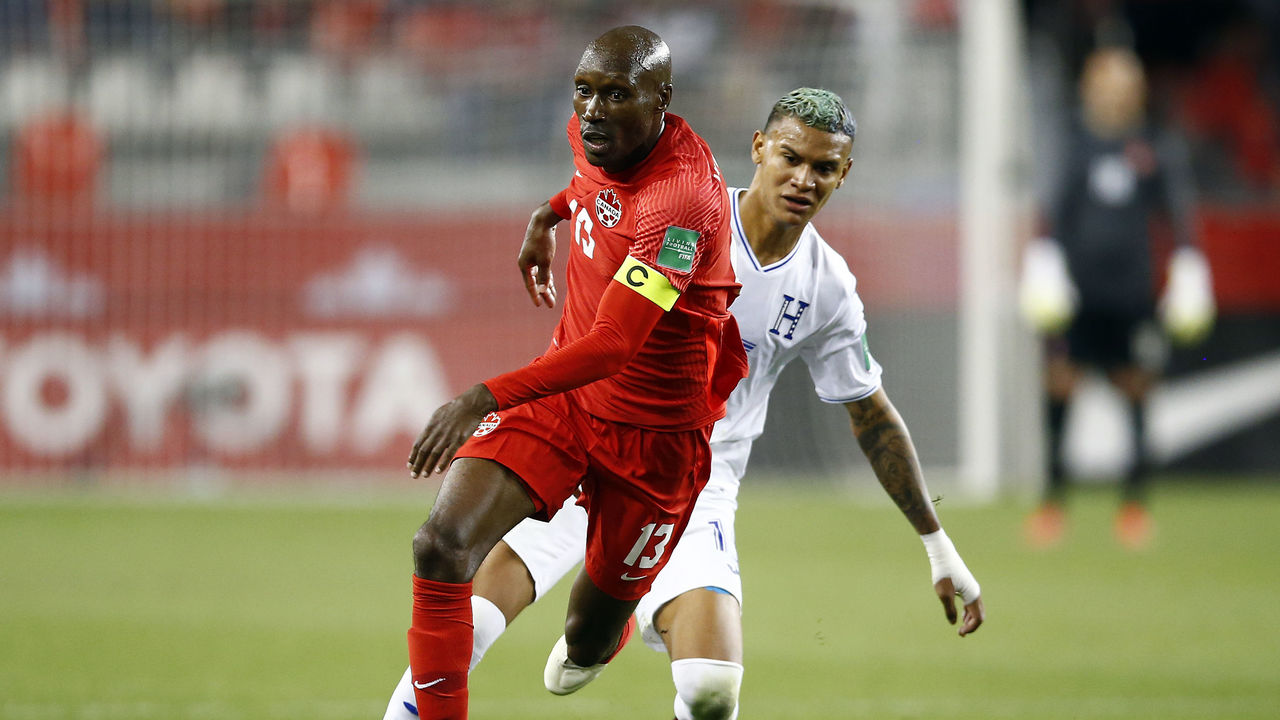
One city springboarded much of the team there. When Canada nets its first World Cup goal in the next couple of weeks, the odds are good a Bramptonian will get credit.
Before Cyle Larin troubled goalkeepers professionally, Canada’s top striker and all-time scoring leader rose through the Brampton youth ranks. Dynamic winger Tajon Buchanan grew up in Brampton; so did Toronto FC stalwart midfielder Jonathan Osorio. Doneil Henry, Junior Hoilett, and Liam Millar all progressed from Brampton to the English pro game, though Henry was injured last week and will miss the tournament.
“Half the team is from Brampton. All the stars are from Brampton,” mayor Patrick Brown, exaggerating only slightly, enthused at a city council meeting this year. “There’s something in the water here that is creating soccer excellence.”
Brampton has quadrupled in size in Hutchinson’s lifetime. More than 650,000 people live there, which makes it one of Canada’s 10 largest cities. The half-hour drive to downtown Toronto in clear traffic passes Pearson International Airport.
Brampton is a manufacturing hub and cultural mosaic. More than half of Brampton residents are immigrants – many come from India, Pakistan, Caribbean nations, or pockets of Europe – and almost three-quarters of the population is a visible minority, according to census data.
“It’s full of families with humble beginnings. It’s a place where you have to work for everything. You have to work to get to the top and earn your way there,” Osorio told theScore in a recent interview.
“A lot of guys have fought to be where they are. A lot of that has to come from the environment they grew up in.”
Comedic bigwigs Michael Cera and Russell Peters hail from Brampton; so do the artists Alessia Cara and Rupi Kaur. The city’s produced multiple hockey greats (Cassie Campbell, Rick Nash) and top NBA draft picks (Anthony Bennett, Tristan Thompson), but the wealth of homegrown soccer talent astounds.
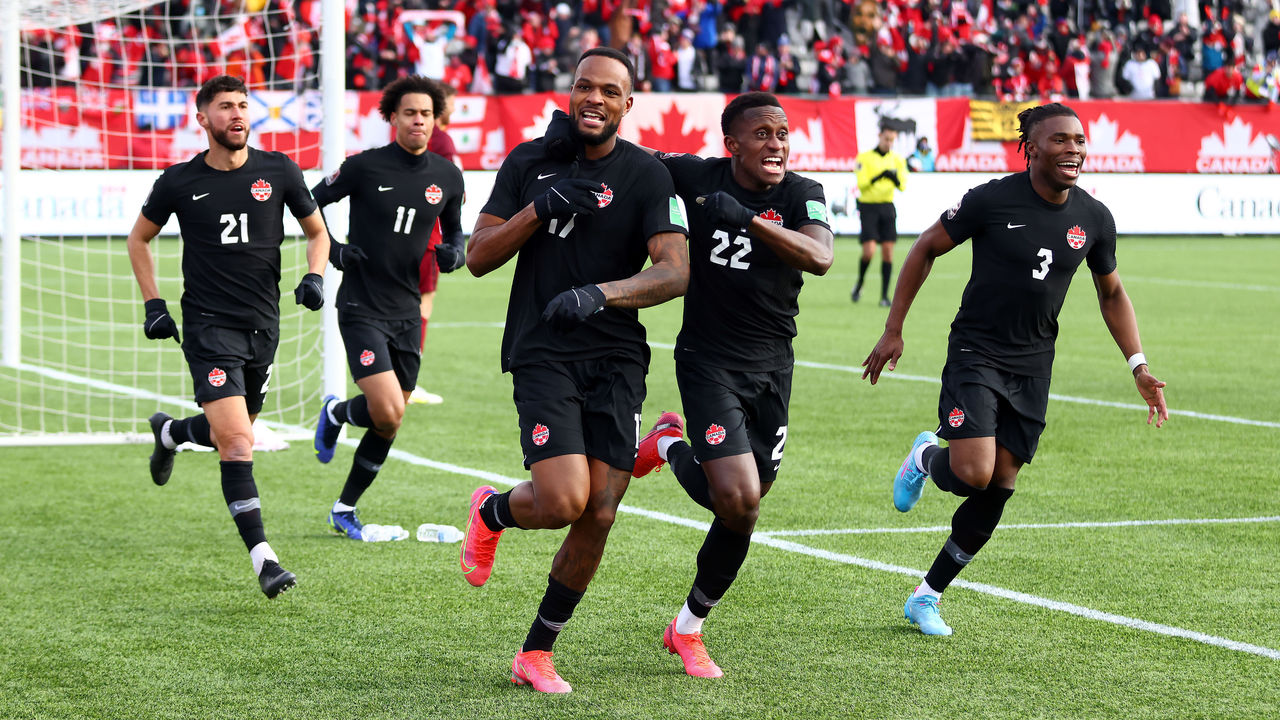
Bramptonians have a few explanations for this. There are a lot of fields in the city, the sport is inexpensive to join, and diverse influences shape how it’s coached and played at grassroots levels. Della Sciucca said the Arnott Charlton cohort was made up of first-generation Canadians, himself and Hutchinson included, whose motherlands revere soccer: “We had Italians. We had Trinidadians. We had Spanish. We had Jamaicans.”
“There’s a lot of football culture in those cultures,” said Kadeisha Buchanan (no relation to Tajon), the Olympic gold and bronze medalist from Brampton who plays center back for the women’s national team and Chelsea.
“The soccer community in Brampton, it made the players who we are today.”
A Brampton semi-pro team plays in League1 Ontario, in Canada’s third soccer tier, but elite prospects usually go elsewhere to peak. Hutchinson achieved stardom “the long way,” Della Sciucca said, referencing how Hutchinson moved from modest teams in Sweden to Danish, Dutch, and Turkish powerhouses. Larin was Hutchinson’s longtime Besiktas teammate and recently joined Tajon Buchanan at Club Brugge, the reigning Belgian champion.
Consistency and diligence define Hutchinson’s game and pervade the Brampton soccer scene. Families who head there with hope and the willingness to work hard apply that attitude to soccer, said local youth coach Desmond Gardner, who emigrated from England in the 1980s. He’s seen kids who follow the sport voraciously link up to bolster their own development.
“You have a lot of mature heads on young shoulders,” said Gardner, 65, the club head coach at Brampton Soccer Club. “It’s rare that you find a child and he’s totally isolated. He’s always operated and worked with two or three or four friends. They’ll work together in a close-knit network.”
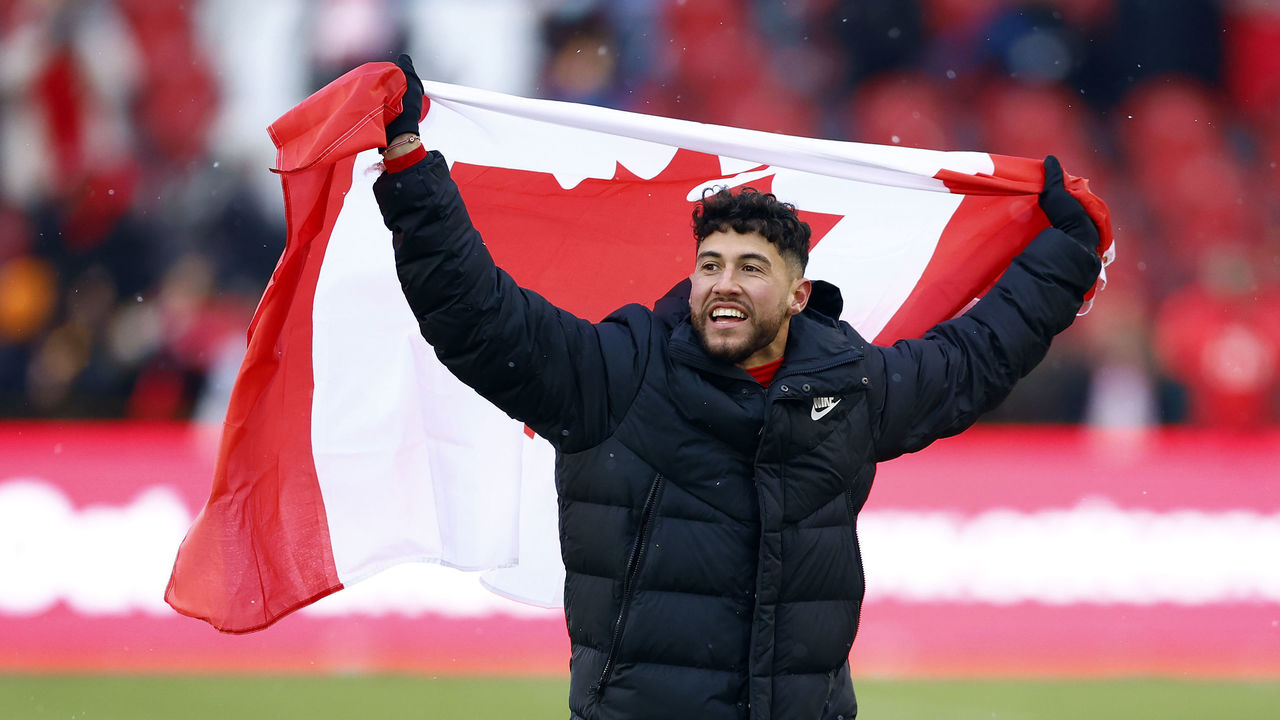
Canada, the world’s No. 94 side when John Herdman took over as manager, has risen in four years to No. 41 entering the World Cup. They defend and counterattack like plucky underdogs, but also play with flair. Top talents at major clubs – Bayern Munich’s Alphonso Davies, Lille’s Jonathan David, and Porto’s Stephen Eustaquio – teamed with ‘keeper Milan Borjan and the Brampton contingent to lead the program to the CONCACAF title.
Osorio said he’ll realize a dream in Qatar by matching up with Kevin De Bruyne and Luka Modric, the glittering midfielders who star for Canada’s toughest Group F opponents. De Bruyne’s Belgium team is second in the FIFA rankings. Modric won the Golden Ball as tournament MVP when Croatia surged to the 2018 World Cup final. They vie for Champions League titles and boast Instagram followings in the tens of millions.
Fans everywhere know their names. Their countries are World Cup mainstays. Osorio dreamed in Brampton that he’d face players of their caliber on this stage.
“I think every kid does. I did, too, even though, being a Canadian, it was a longshot. It also was a longshot for a Canadian kid to be a professional footballer,” Osorio said.
“All of us, we dreamed it anyway and we hoped, and it’s gotten us to where we are. It just so happens that there’s many of us who dreamed it (in) the same generation.”
Weeks before Canada clinched its World Cup berth in March, Hutchinson and Della Sciucca spoke to Brampton council to pitch the creation of a turf soccer court. The concept is European: Della Sciucca encountered it in Italy while studying on exchange there just as Hutchinson’s pro career took off in Sweden. Children drop by these street-side enclosures for spirited pickup games that promote skill development and creative thinking.
Intrigued, Brampton decided to place one beside Century Gardens Recreation Centre, where there are fields out back for kids to shoot on net and roam. The court space is a fenced-in gravel plot waiting to be prettified.
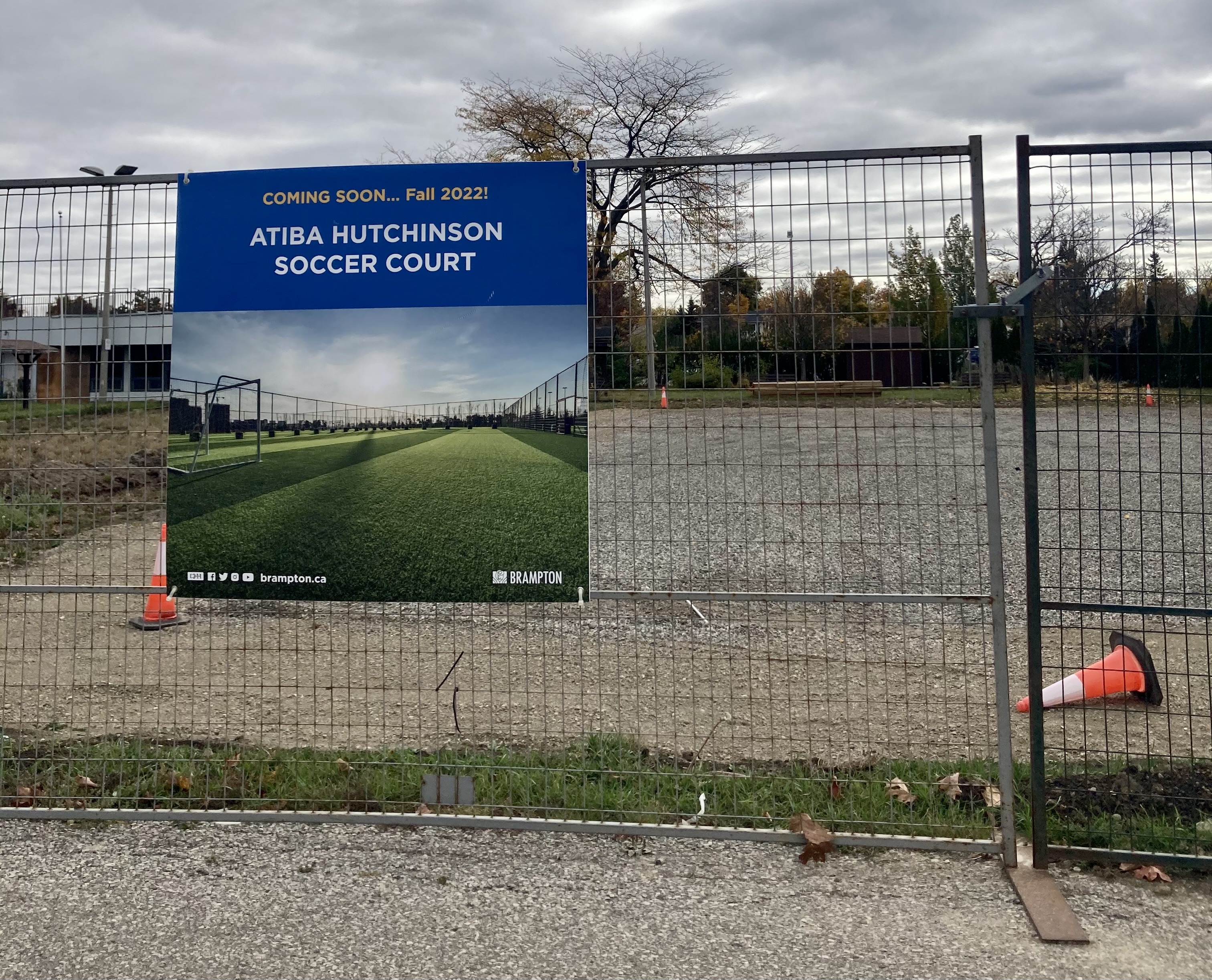
Once built, lights will brighten the court year-round. It’s in Hutchinson’s old neighborhood and will bear his name.
“We know it’ll do well in the spring and in the summer. But we really think it’ll be successful if kids are bringing out their shovels in November and December,” Della Sciucca said.
“Just as they shovel ice, if they shovel the snow off this thing, the kids will want to play. We’re hoping the next Davies, the next Hutchinson, comes from these courts.”
The homage to Hutchinson advanced a trend. Brampton named adjacent fields for Kadeisha Buchanan and Ashley Lawrence, a longtime youth and women’s national teammate, following Canada’s gold-medal triumph at the Tokyo Olympics last year. Brown and the players’ Brams United youth coaches joined them at the unveiling.
“It makes me feel like my life is full 100,” said Buchanan, a five-time Women’s Champions League winner with her former club, Lyon. “To go from where I started to a field named after me was an amazing feeling.”

Enticed by family and food, Brampton pros return home when their schedules allow it. Kadeisha Buchanan likes to shop at the city’s Asian and Caribbean markets. Brampton councillor Martin Medeiros has run into Osorio at Tonino’s, the pizzeria that once named a chicken parm dish after the midfielder.
Medeiros is an avid soccer fan. Once a youth midfielder who cleared snow from tennis courts to kick the ball around, he’s seen turf courts buzz on every second block on his trips to Portugal, his ancestral country. He expects Bramptonians will pack downtown establishments to take in the World Cup, knowing “whatever our ethnic origin is, Canada’s that unifying force.”
“Everybody knows the game well. Everybody follows the game. This time, you’ll see them all united for the same team for a change,” said Harkirat Singh, another member of city council. “That’ll be a beautiful thing.”
Brampton players have electrified the country already. Larin’s six goals in the final round of CONCACAF qualifying included icebreakers in frigid settings nationwide – against Mexico in Edmonton, the United States in Hamilton, and Jamaica in Toronto. Tajon Buchanan back-flipped to celebrate his goalmouth tuck in that Jamaica match; Hoilett’s sweet chip from outside the six-yard box sealed a blowout win and passage to Qatar.
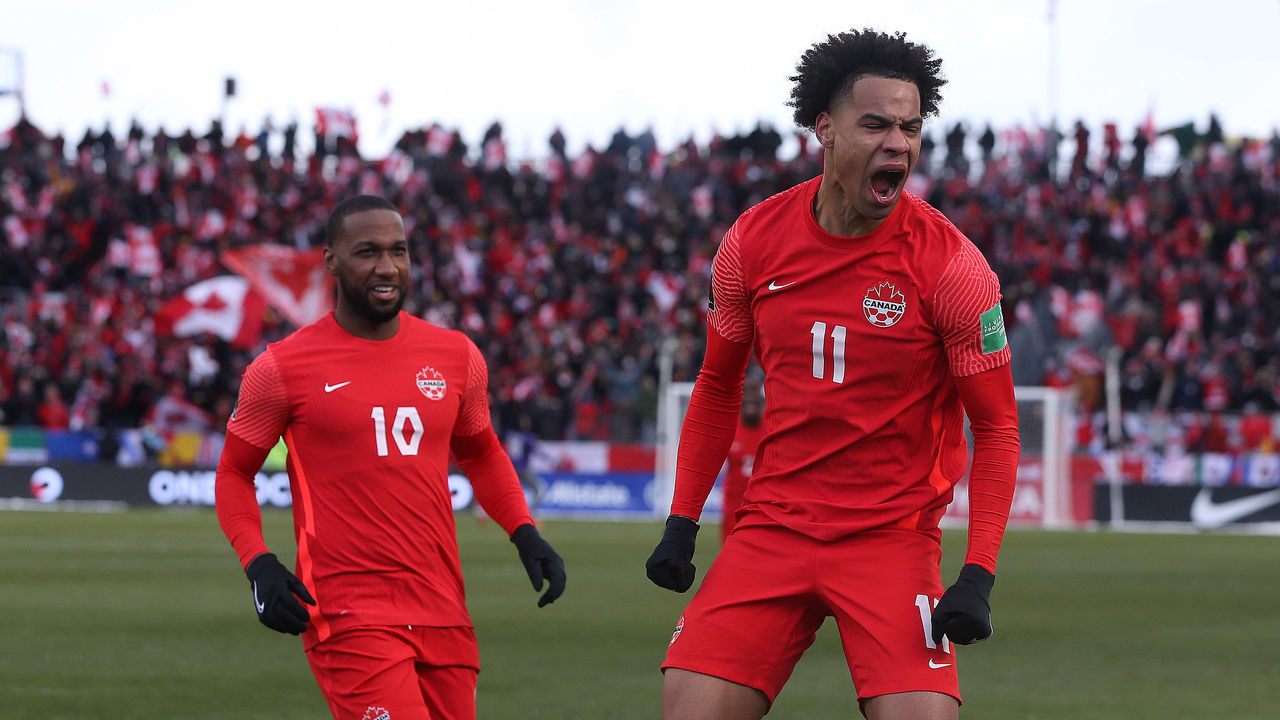
Long before Hutchinson went pro abroad, Gardner coached him as a young grassroots player. Hutchinson took over matches at seven years old and didn’t plateau in his teens. He was athletic and a good teammate, fond of savoring the sport with his friends. They watched faraway top-flight games together for inspiration and imitated their idols’ moves at Arnott Charlton.
Gardner went to the World Cup clincher at BMO Field. He wandered the concourse pregame and kept spotting familiar faces. Guys from Hutchinson’s Brampton cohort were there to watch him shine.
“It was like walking down Yesterday Avenue. I began to see a lot of these players I hadn’t seen in years,” Gardner said.
“They’re all there to support and cheer Atiba. It’s an extended family bond.”
Nick Faris is a features writer at theScore.


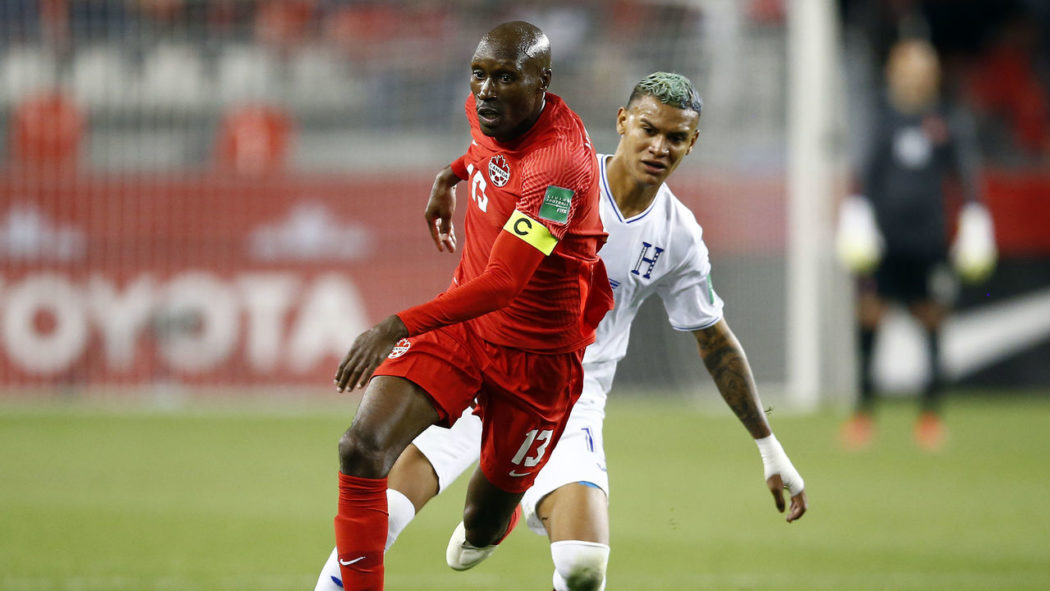



Latest Comments